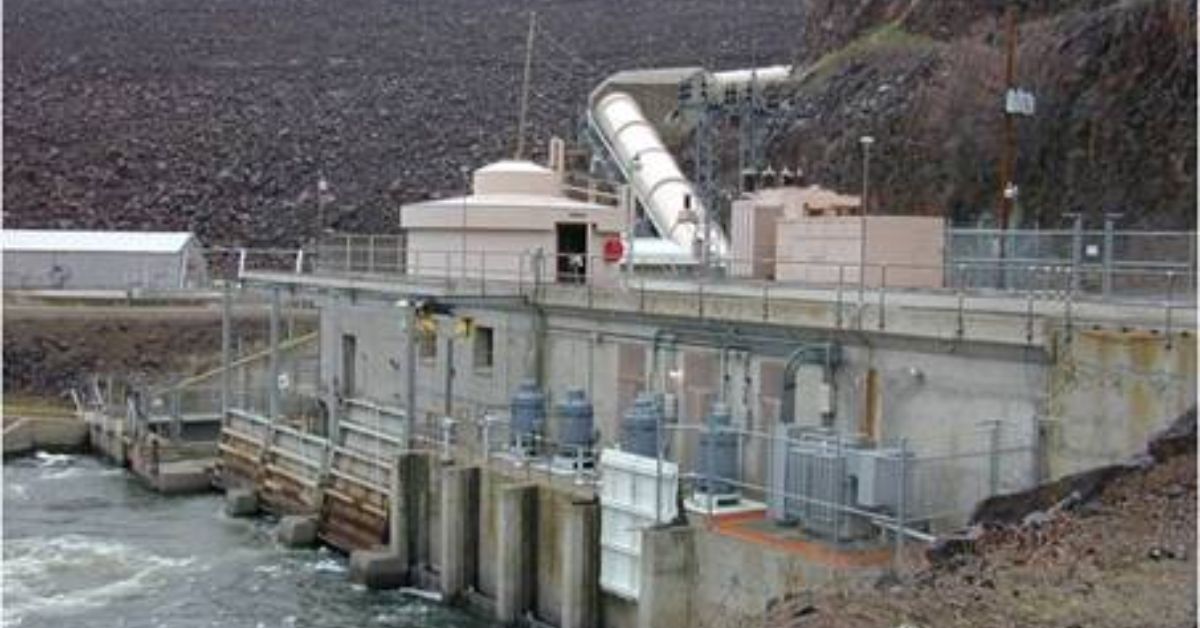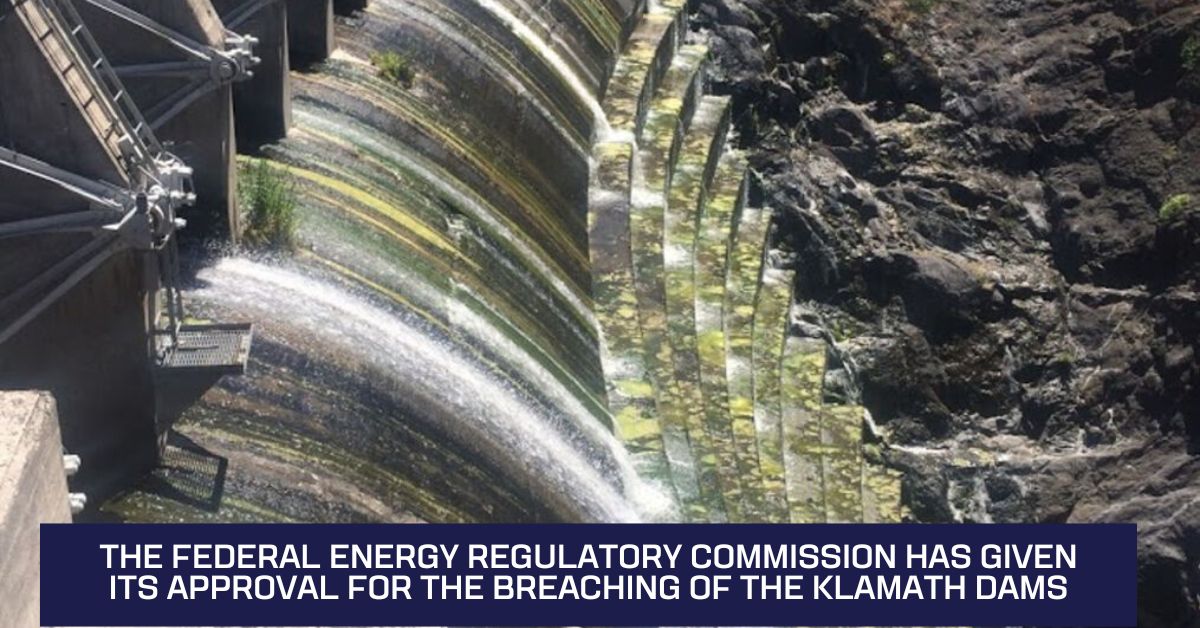The removal of dams from the Klamath River has been delayed for the past two decades, but the final obstacle that stood in the way has finally been conquered.
Joseph James, Chairman of the Yurok Tribe, was quoted in a statement as saying, “The Klamath salmon are coming home.” “The people have worked hard for this victory, and as a result, we can fulfil the sacred duty that we owe to the fish, who have provided for the wellbeing of our people since the beginning of time.”
The order to relinquish the licence for the Lower Klamath River Hydroelectric Project, which includes the J.C. Boyle, Copco No. 1, and Copco No. 2 dams on the Klamath River, was granted by the Federal Energy Regulatory Commission on Thursday.
This indicates that dam removal can begin as soon as PacifiCorp transfers the licence to the Klamath River Renewal Corporation, a nonprofit organization founded to manage dam removal and river restoration along with the states of Oregon and California.
“Today’s victory was well earned by the thousands of people who fought for clean water, healthy fisheries, and environmental justice for Klamath River communities,” Karuk Chairman Russell “Buster,” Attebery said in a statement.
“Today’s victory was well earned by the thousands of people who fought for clean water, healthy fisheries, and environmental justice for Klamath River communities.” “I am grateful to every person who was a part of this victory, from the children to the adults, Governors Newsom and Brown, and the team from PacifiCorp,”
Since European colonization, the indigenous people of this region have been fighting against this kind of industrial development. More recently, they have begun collaborating with environmentalists and fishing groups to bring down the Klamath dams, which was prompted by a historic fish kill in 2002 caused by an arid year and poor water conditions.

This day will go down in the annals of history for the indigenous people of the Klamath River and indigenous people everywhere else in the world. According to Amy Cordalis, who is a member of the Yurok Tribe and the principal of the Ridges to Riffles Indigenous Conservation Group, “When we act together with a unified voice, no power in this universe can stop us.”
The final environmental impact statement for the licence surrender was published by FERC staff in August. They also recommended that the application to remove four of the six hydroelectric dams on the Klamath River be approved, stating that the overwhelmingly positive environmental benefits would outweigh the loss in power generation.
More News:
- Pelosi Doesn’t Mention Trump In Her Farewell Speech, But She Does Talk About Bush, Obama, And Biden
- “Positively Dystopian”: A Judge In Florida Blocks Desantis’ Anti-woke Law For Colleges
A negotiated agreement that was developed between the dam owner Berkshire Hathaway Energy-owned utility company PacifiCorp and the Karuk Tribe, Yurok Tribe, California, Oregon, conservation groups, and commercial fishing groups made it possible for the approval of the licence surrender order, which was the last step in a six-year regulatory process with FERC. Accepting the licence surrender order was the final step in a regulatory process that lasted for six years.
Vivian Halliwell, a former commercial salmon harvester who is now the watershed conservation director for the Pacific Coast Federation of Fishermen’s Associations, said, “Restoring the Klamath gives our struggling salmon fishing industry a chance to survive.” Hilliwell’s comments were made about the Klamath River. “The prospect of restored fish runs in the Klamath River gives us hope that we can carry on our long-standing practice of supplying wholesome wild salmon to restaurants and consumers across the United States,”
At the moment, the dams make it easier for a disease called Ceratomyxa shasta to spread to as many as 90% of young salmon species. When the barriers are taken down, the conditions that keep these species healthy will return. Other benefits include putting salmon back in their original habitat of more than 400 miles and getting rid of the reservoirs that let toxic algae blooms grow every summer.
This culminates 10+ years of work to revitalize the Klamath River & its vital role in sustaining tribal communities.
We’re grateful to partner with OR, the Yurok & Karuk Tribes & Berkshire Hathaway on the largest river restoration project in U.S. history. https://t.co/smc0VrM8MK
— Office of the Governor of California (@CAgovernor) November 17, 2022
More News:
- The Whittier Crash That Injured Police Recruits Was Likely Intentional; The Driver Was Caught
- When Liberals Are Upset That Republicans Won The House, They Blame “illegal” Gerrymandering
Rep. Jared Huffman (D-San Rafael) said in a statement that bad conditions on the Klamath River had hurt tribal communities, commercial and recreational fishermen, and the economies of both California and Oregon. “We know that fisheries and wildlife have benefited greatly from other dam removal projects in the West, and the Klamath River has a huge chance to recover and rebuild once this work is done.”
The Copco No. 2 dam will be the first to be taken down. This will happen in 2023. The last three dams are expected to be taken down at about the same time in early 2024. By the end of the year 2024, all four dams should be gone.
“Dam removal is coming soon,” said Wendy Ferris-George, a Klamath River Renewal Corporation board member who was put there by the Karuk Tribe. “We are very grateful to the many Native Americans who have worked their whole lives to make the Klamath River and their communities more balanced.”
Besides removing the dams, there will also be projects to fix the environment. Last year, the infrastructure law put $162 million into restoring the Klamath Basin ecosystem. This includes fixing problems with the water quality and making things better for waterfowl, salmon, and other native fish species in the basin.
Before making the decision, FERC commissioners said they agreed that the dams should be taken down. Chairman Richard Glick said that we now know more about how dams affect the environment and that the decision makes sense to protect fish and wildlife.
“Some people might ask why the licensee is agreeing to take down the dams when we need zero-emission energy so much right now,” Glick said Many of these projects were given permits many years ago when environmental issues weren’t as important.
Glick said that the last time a dam was given permission to be shut down and taken down was ten years ago. Politicians and people who want to get rid of dams made statements about how happy they were with the decision, which cleared the way for the largest river restoration project in the world.
“Today’s action is the culmination of more than a decade of work to restore the Klamath River and its important role in tribal communities, cultures, and ways of life,” said Gov. Gavin Newsom. “California is grateful to Oregon, the Yurok and Karuk Tribes, Berkshire Hathaway, and all the other people and groups who worked together to make this life-changing project happen for future generations.”
Oregon Gov. Kate Brown said that removing the dams won’t just be good for the environment but will also help the Indigenous people living there. PacifiCorp President and CEO Stefan Bird thanked everyone involved for staying “committed to finding a settlement to this complicated and difficult issue.”
Petey Brucker, who helped start the Salmon River Restoration Council, said, “It seems like a lifetime ago that we began working together on this important project.”
“It became clear early on in our efforts to protect and restore the wild Spring Chinook of the Salmon River that the Klamath dams would have to come down for this dream to come true,” Brucker said. “Partners from around the basin and I have been working toward this goal for over 20 years. We’ll finally take down the Iron Gate Dam and let those fish swim through!”
Please enjoy our article if you do. If so, we’d love to hear your insights in the space provided below. You can find more such news at Journalistpr.com, which you should also bookmark.

Leave a Reply